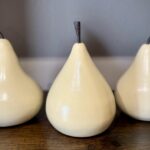
This Florida favorite features a unique fragrance that becomes even more pronounced as the blooms age
With their glossy dark green leaves, creamy white flowers and glorious fragrance, gardenias are a favorite among local gardeners. Gardenias are frequently used as screens, hedges, borders or groundcover but remember-they can be temperamental. Proper soil, water, humidity and light are the essential ingredients to growing great gardenias.
Planting-Keep them warm
Gardenias are warm-climate plants. They thrive in our growing zone and enjoy exposure to full sunlight and daytime temperatures in the low 70s with a drop of ten degrees at night.
- Plants can be severely injured when temperatures fall to freezing.
- Plant in spring or fall, spacing plants three to six feet apart.
- Some plants grow as high as six feet so plant to allow for maximum growth
Gardenias require part to full sun. Morning sun followed by dappled shade creates the perfect light conditions. Avoid planting next to concrete patios or walkways because concrete can raise pH levels, and gardenias need a soil pH between 5 and 6.
Have the soil tested to determine pH, and if necessary add the recommended amount of sulfur to reduce the pH to between 5 and 6.
Where soil pH is above 7 a constant effort will be required to avoid micronutrient deficiencies, most notably iron. If you want to grow gardenias despite soil limitations, consider growing one or more in pots because they are well adapted to container planting
Dig a hole only as deep as the root ball and two to three times as wide. If your soil is in very poor condition add a small amount of compost and peat moss. Add the plant, fill the hole half full with soil, then water it well to settle the soil and eliminate air pockets. Let the water drain, then fill the remainder of hole with soil and water thoroughly.
Use organic mulch around planted gardenias to maintain optimal soil moisture. Be sure to keep the mulch a few inches away from the base of the plant to prevent fungal problems.
- Gardenias are not salt tolerant, so beachside planting isn’t advised.
- Gardenias don’t like being moved once they’re planted, so choose your site wisely.
Watering-Keep them wet
High humidity is essential, but avoid misting the foliage, as leaf spot fungal problems will develop. The soil should be kept uniformly moist, but don’t over water.
Gardenias require at least an inch of rain (or equivalent watering) each week. Gardenias need humidity in the air and water in the soil to bloom properly.
Water a minimum of twice a week during the first six weeks of establishment.
As the roots begin to grow you can reduce the watering to every three to four days. Good watering is especially important during dry periods. Water determines the number of buds that will remain on the plant until it reaches maturity.
Fertilizing-Keep them fed
Gardenias are heavy feeders so fertilize new plants lightly with a general garden fertilizer every six to eight weeks. Feed established plants in March, May, August and October with an acidifying fertilizer.
In Central Florida where soil potassium is frequently inadequate use a fertilizer containing 30-50 percent slow-release potassium.
Sometimes plants may become yellow due to an iron deficiemcy. Try foliar application of iron.
Yellowing may also be caused by insufficient light, over watering, poor drainage, low soil temperature and nematode damage or disease. Some yellowing on older leaves during the fall and winter is normal before new growth appears
Pruning-Handle with care
Pruning should be done just after the plant finishes blooming and early enough to allow new growth to be at least four to six inches long by October 1.
Pruning after October 1 decreases next year’s blooms.
Young plants, growing vigorously during their first year, may be pinched once in June and again in August to encourage heavy branching.
Pests and other problems-Keep a close watch
Gardenias are very attractive to certain pests including mealybugs, aphids, scales and whiteflies. Mealybugs, one of the most prevalant, can be identified as white, cottony masses found in the leaf axils and other protected areas of the plant. Aphids can also be a challenge. Look for a soft-bodied, tear-shaped insect, typically clustered around newer growth and/or on the underside of leaves. Scale appears as raised brown bumps on the stems and underside of leaves. Whiteflies are small winged insects that look like moths . Whitefly feeding not only damages plants, they can also transmit plant viruses.
Inspect your plants regularly and apply control measures when pests appear.
“Sooty mold,” turns foliage black and prevents sunlight from reaching the leaves, reducing photosynthesis. It lives on honeydew secreted by sucking insects and can best be managed best by controlling these insects. Remove the sucking insects with an insecticide recommended by your local gardening center. Wash the gardenia leaves with soap and water after insect removal.
One of the most frustrating problems for gardenia gardeners is Bud Drop, the abnormal dropping of buds. Causes include root injury, insect damage, and unfavorable weather conditions. Insects can also damage unopened buds, causing them to drop. During excessively hot, dry weather, bud drop is prevalent because the plant cannot absorb water rapidly enough to compensate for water lost through its leaves.
Gardenias may also experience bud drop following a rapid drop in temperature. Some bud drop is natural but every effort should be made to keep the soil uniformly moist (not wet) during flowering.
Additional Problems that may occur include:
Canker
- Check to see if a main stem is swollen near or below soil line
- Bark also becomes corky and cracked in the cankered area.
- Stem above the canker is bright yellow in contrast to normal greenish white.
- Affected plants are stunted and die slowly.
- Destroy all diseased plants to prevent spread of the disease and plant new plants in a different location.
- Bacterial Leaf Spot
- Small, round oval spots on young leaves are the first sign of bacterial leaf spot. As the spots enlarge, the center is at first pale yellow and later becomes reddish-brown surrounded by a yellow halo.
- Severe infection may cause defoliation.
- Avoid overhead watering.
Rhizoctonia Leaf Spot
Tan to brown spots up to one-quarter inch in diameter. Spots are circular and zoned. The disease begins on the older leaves and spreads upward when the plants are watered excessively or when air circulates poorly because of overcrowding. Diseased leaves should be destroyed and sterilized soil should be used.
Avoid wetting foliage when watering.
Leaf Spot
Spots of various sizes on leaves throughout the year. Spots may be small, dark-brown necrotic areas surrounded by a yellow halo. In severe cases, premature leaf drop may occur. Control by spraying with a folia fungicide at regular intervals.
Powdery Mildew
White, powdery spots on leaves. Use preventive fungicide.
Nematodes
Microscopic, parasitic roundworms that feed on roots.
Symptoms include premature wilting, low vigor, thin canopy, and leaf and/or bloom loss under mild stress.
Roots infected by root-knot nematodes are swollen and gnarled and and often succumb to disease.
Plant grafted gardenias in locations where they are adapted and apply organic matter liberally to the soil. This encourages natural enemies of the nematodes and provides gardenia roots with a better physical and chemical environment
A wide variety of gardenia cultivars are commercially available in Florida. They vary in flower size and form, blooming time and duration, and growth.




